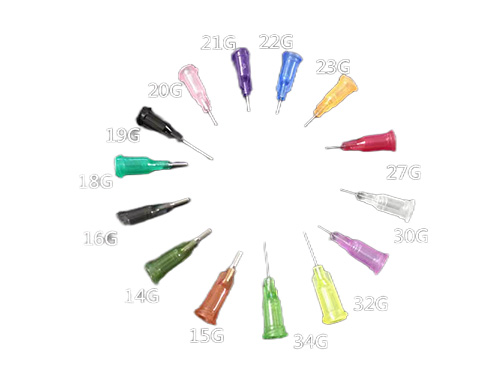Why Styrofoam Seedling Trays Are the Ultimate Solution for Efficient and Sustainable Plant Growth
2025-01-10 05:49:54
When it comes to starting plants from seeds, choosing the right growing medium and container can significantly impact the health and success of your seedlings. Styrofoam seedling trays have become a popular choice among both home gardeners and commercial growers. These trays offer numerous advantages, from cost efficiency and durability to environmental benefits. In this article, we’ll explore why styrofoam seedling trays are an ideal choice for efficient and sustainable plant growth, and how you can make the most of them in your gardening or farming endeavors.
What Are Styrofoam Seedling Trays?
Styrofoam seedling trays are growing containers made from polystyrene foam, commonly known as Styrofoam. These trays are designed to hold individual compartments where seeds are planted and nurtured until they are ready for transplanting. Styrofoam is lightweight, inexpensive, and has excellent insulation properties, making it a versatile and practical choice for early plant growth stages.
Key Benefits of Using Styrofoam Seedling Trays
Cost-Effective Solution for Seedling Production
Styrofoam seedling trays are one of the most affordable growing containers on the market. The low cost of production makes these trays accessible for hobby gardeners, commercial farms, and large-scale nurseries. You get high-quality functionality without breaking the budget.
Excellent Insulation Properties
Styrofoam’s natural insulation properties help maintain a stable temperature for seedlings. This is particularly beneficial in colder climates or early seasons when consistent warmth is crucial for seedling survival and growth.
Lightweight and Easy to Handle
Due to their lightweight nature, styrofoam trays are easy to move and handle. Whether you’re transplanting seedlings, adjusting their placement for optimal sunlight, or storing them, the light weight ensures convenient transportation and minimal hassle.
Durable and Long-Lasting
Styrofoam trays are highly durable and can withstand various environmental conditions. They don’t easily break or wear out, ensuring a long-lasting growing medium for multiple planting seasons.
Good Water Retention and Drainage
Although styrofoam trays are not porous like traditional soil containers, they retain moisture well while allowing for good drainage. This balance helps prevent overwatering and root rot, ensuring the health and longevity of your seedlings.
How to Use Styrofoam Seedling Trays Effectively
1. Choose the Right Tray Size
Styrofoam trays come in various sizes and compartment depths. Select a tray size that matches the scale of your growing project. Smaller trays work well for hobby gardening, while larger trays are better suited for commercial nurseries and larger farms.
2. Prepare Your Growing Medium
Although styrofoam trays themselves do not contain soil, you should fill each compartment with a high-quality growing medium like peat moss, vermiculite, or a specialized seed-starting mix. This provides essential nutrients and support for healthy root growth.
3. Plant Your Seeds Strategically
Place your seeds at the recommended depth according to the instructions on the seed packet. Cover them with a thin layer of soil or growing medium and gently water each compartment until the medium is moist but not soggy.
4. Ensure Proper Light and Temperature
Place your styrofoam trays in an area with ample sunlight or under grow lights. Additionally, maintain a consistent temperature of around 65-75°F (18-24°C), as most seedlings thrive within this range. Styrofoam’s insulation helps maintain these temperatures.
5. Monitor Watering Carefully
While styrofoam trays retain moisture well, it’s crucial not to overwater. Check the moisture levels regularly and water only when the growing medium feels dry to the touch. Use a gentle watering method to avoid dislodging delicate seedlings.
Environmental Considerations and Sustainability
Recyclable and Long-Lasting Material
Styrofoam is highly recyclable, and many recycling programs accept polystyrene products. If you have used trays, consider sending them to a recycling facility or reusing them for future planting projects.
Sustainable Growing Practices
Many gardeners and commercial growers prefer styrofoam trays because they are lightweight, which reduces transportation energy consumption. This means fewer emissions and a smaller carbon footprint, contributing to more sustainable gardening practices.
Reusable for Multiple Growing Seasons
Styrofoam trays are designed to last multiple growing seasons. Their durability allows gardeners to reuse these trays repeatedly, reducing waste and the need for frequent replacements.
Common Challenges with Styrofoam Seedling Trays
Environmental Concerns
Although styrofoam is inexpensive and practical, it is not biodegradable. If not disposed of properly, it can contribute to environmental pollution. It is important to recycle or reuse old trays rather than discard them irresponsibly.
Potential Root Health Issues
Since styrofoam is not porous, it does not retain nutrients or allow roots to interact with the growing medium in the same way soil does. Always use a good-quality growing medium to ensure nutrients are available for healthy plant development.
Tips for Maximizing Your Styrofoam Seedling Success
Combine with Other Growing Containers
For a more robust growing system, combine styrofoam trays with larger containers or soil beds to facilitate better nutrient absorption and growth.
Implement Companion Planting Strategies
Plant compatible seedlings together in rows or groups to enhance growth and reduce competition among plants.
Use Organic Seedling Mixes
Pair styrofoam trays with organic seedling mixes to provide a balanced mix of nutrients, retain moisture, and support robust root development.
Conclusion
Styrofoam seedling trays are an excellent choice for gardeners and commercial growers seeking an efficient and cost-effective way to start seedlings. Their affordability, durability, insulation properties, and lightweight nature make them a practical choice for multiple growing seasons. While they offer many advantages, it's crucial to pair them with appropriate growing mediums and sustainable practices to ensure optimal plant health and environmental responsibility. By understanding how to use styrofoam trays effectively, you can enjoy a successful, sustainable, and productive gardening or farming experience.

It adopts electrical integration and can be started by pressing the fully automatic button ...

The XP750 seeder has stable performance, excellent product quality, simple and convenient o...

It adopts electrical integration and can be started by pressing the fully automatic button ...

Needle list Seed nozzle model Different models Sowing types are different...



